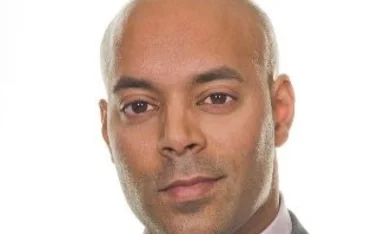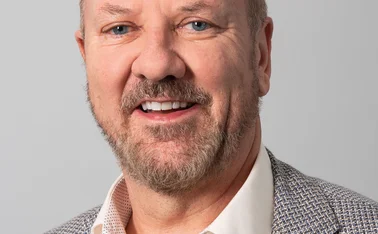
An unsettled outlook for household
With weather statistics suggesting 2003 will be a subsidence 'event year' in the UK and the long-range forecast that the country's climate is set to change dramatically, Ralph Savage believes insurers are facing significant challenges in the household sector and must batten down the hatches
With numerous commentators declaring 2003 will be a subsidence 'event year', insurers are bracing themselves for an increasing number of household claim notifications.
In a presentation to delegates at the Chartered Insurance Institute conference last month, George Moss, immediate past-president of the Chartered Institute of Loss Adjusters, produced some staggering figures. Included were statistics from the World Meteorological Office, which suggest event years could become the rule rather than the exception.
"The 20th century has produced larger changes in temperature than any other period during the last 1000 years," Mr Moss informed delegates.
"And four out of the top five warmest years since records began have occurred in the last decade." His message was a stark warning, considering those records have been kept for 337 years.
Mr Moss's reality check for UK climate change is that from now on, the south-east of England will have hot, dry summers every year. "Winters will be far wetter - probably around six times as much. The climate in the south-west of England will be more like Bordeaux and the North-west will be Devonian, with 10% more rain."
These issues obviously create significant challenges for household claims, both cosmetically in terms of weather damage to roofs and windows, and structurally, to foundations and walls from flooding and subsidence perils.
This year has lived up to expectations for extremes of temperature and according to Kevin Grealis, property claims and services manager for MMA Insurance, valid subsidence claims have risen sharply. Mr Grealis says the change began with a rise in notifications beginning in July. "I anticipate the surge in subsidence notifications is going to continue into 2004.
Depending on what weather we have in 2005, we will be able to determine the level of notifications there will be from that point. This year's surge has resulted in our claims being 125% over last year and the rise in valid claims has climbed from 40% to 90% in 2003."
Norwich Union's head of property claims John Wickham reports a similar pattern of validated claims, echoing Mr Grealis' experience. "We have not had as large an increase in subsidence notifications over the whole year, but perhaps since the hot weather began in August, and over the last few months, we have had something similar."
Subsidence aside, the last 12 months have apparently produced a change in attitude from the public, who, according to Nigel Stickland, managing director and founder of Countrywide Property Inspections, have chosen to take personal control of their building claims. "We have found that a growing number of policyholders are wishing to instruct their own builders again. It's what I call 'the Changing Rooms factor'. Previously, insurers have encouraged them to go down the route of using approved contractors, but if they impose too much, then there is more opportunity for complaints."
Going it alone
Mr Stickland says while networks do have their place, given the option of a cash settlement, people are more willing to go it alone. "As long as the building has been properly scoped and costed, customers might have their own relationship with builders or decorators."
Contrary to Mr Stickland's declaration that homeowners have gone a bit 'Lawrence Llewellyn-Bowen', Nick Clark, manager of national building services at adjuster Crawford & Company, has growing praise for the value building networks can bring. He says a great many have woken up to the customer service challenge of representing an insurer. "Over the last 12 months, we have got better at providing a decent network of contractors that are properly vetted. We are now getting this to work properly. Being honest, the building industry is not always customer-focused, but I have seen several firms looking at insurance claims business now as the way forward. Some are even dressed in uniforms and have evidently been told how best to deal with customers."
Mr Clark is also pleased with developments made by adjusters and the insurance industry to streamline their supplier networks and cites Royal & Sun Alliance's consolidated network of 25 firms (PM, 24 July, p4) as a plus for the industry and consumers. "The insurers have come down from a substantial number of suppliers to focus purely on the companies they feel they can work with." At the time of speaking, Mr Clark was due to meet with RSA and representatives of the new network the following week.
"That is a good start - sitting round a table and finding out what we want from each other is certainly progress."
Giving your local building contractor a friendly face is an obvious improvement and could be a winning formula for smaller buildings claims. However, at the opposite end of the scale, insurers are engaged in a constant battle with the elements, to keep on top of potential catastrophes. Both insurers and adjusters are looking at new innovations to help them identify and validate claims. "We have done a lot of work with aerial photography in London, but we are still trying to get it to work properly," says Mr Clark.
"It is very useful to pinpoint trees and, therefore, it can enable you to assess a subsidence claim before you go."
However, new technologies have not overly-impressed MMA's claims and services department when it comes to subsidence claims. "Aerial photography has not been particularly helpful to us," says Mr Grealis. "Met Office data is obviously useful on a short-term basis, but it is just not reliable in forecasting over long periods. We can look at trends from Met Office data, such as whether the hotter, drier summers will continue, but the modelling capabilities are more appropriate to underwriters."
A speedier process
Norwich Union has been developing a digital flood-mapping tool for underwriting and this will eventually be applied to claims. Crawford & Co is also attempting to speed up the processes involved in monitoring and predicting subsidence claims - largely in the south eastern areas of the UK, where clay soil is prevalent.
"We are currently doing a lot of lab work," says Mr Clark, "where we measure how much clay will swell when a certain amount of water is added to it. For this we use an Oedometer, which allows us to do in 24 hours what used to take a week."
Monitoring potential subsidence hotspots will benefit all concerned.
However Mr Clark says it is only recently that this has become a truly cost-effective practice for his firm. "We are trying to reduce the amount of monitoring we have to do. During the 1990s, there was far too much resource devoted to this and a typical case would be monitoring a house for 12 months. We are testing remote monitoring now, which uses a contraption not dissimilar to a mobile phone. This is left at the property and can carry out level monitoring without anyone being there."
Mr Wickham says practices in monitoring have improved markedly and, as a result, subsidence costs have been reduced. However, this will probably not affect prices for excess. "Since the previous surges in the mid-1990s, every insurer has improved its monitoring and subsequently costs have fallen. I doubt there will be a fall in excesses though. Our standard excess is £1000 and in high-risk areas it is more like £2000. If we did lower these levels, premiums might rise and people would probably stop doing their own cosmetic work on their homes."
It is widely assumed that many of the insurance industry's biggest flooding and subsidence problems have been the result of poorly-planned housebuilding.
Flood plains, landfill sites and clay soil underfoot have all been subject to affordable housing developments since the Second World War. The current government has new home provision near the top of its agenda and many in the insurance industry believe this will inevitably build up problems for the future.
Problems stored up
Mr Wickham refers to a specific example in the proposed Thames Gateway development, which could see 250,000 new homes built to the east of London.
"There could be some problems being stored up in terms of future claims. I remember when houses were being built on old landfill sites, they had subsidence after 10 years because the engineering work was not thorough enough. One area that concerns me is the development proposals for the Thames Gateway area. This is behind the Thames Flood Barrier and, if houses are built, there could be some problems." However, Mr Wickham adds that NU's digital flood mapping systems should be well broken-in by the time these developments are completed and the system has so far encouraged an increase in coverage for homes. "Our experience is that this is bringing more homes into cover."
Mr Clark believes that insurers will have to contend with the additional problem of decontamination in years to come. "The only area of concern for the future I have, is the building of homes on brownfield sites. We had a similar problem in the 1970s and 1980s when homes were being built on infill sites and they had large numbers of trees surrounding them, which stored up problems for subsidence claims."
However, the future issue for the insurance industry is decontamination and stabilisation and no one knows how big a problem this will turn out to be.
Only users who have a paid subscription or are part of a corporate subscription are able to print or copy content.
To access these options, along with all other subscription benefits, please contact info@postonline.co.uk or view our subscription options here: http://subscriptions.postonline.co.uk/subscribe
You are currently unable to print this content. Please contact info@postonline.co.uk to find out more.
You are currently unable to copy this content. Please contact info@postonline.co.uk to find out more.
Copyright Infopro Digital Limited. All rights reserved.
You may share this content using our article tools. Printing this content is for the sole use of the Authorised User (named subscriber), as outlined in our terms and conditions - https://www.infopro-insight.com/terms-conditions/insight-subscriptions/
If you would like to purchase additional rights please email info@postonline.co.uk
Copyright Infopro Digital Limited. All rights reserved.
You may share this content using our article tools. Copying this content is for the sole use of the Authorised User (named subscriber), as outlined in our terms and conditions - https://www.infopro-insight.com/terms-conditions/insight-subscriptions/
If you would like to purchase additional rights please email info@postonline.co.uk
Most read
- Movers and shakers who made Insurance Post’s Power List 2024 revealed
- Has the Biba Conference shed its ‘Butlin’s for Brokers’ reputation?
- Former colleagues pay tribute to David Sweeney







